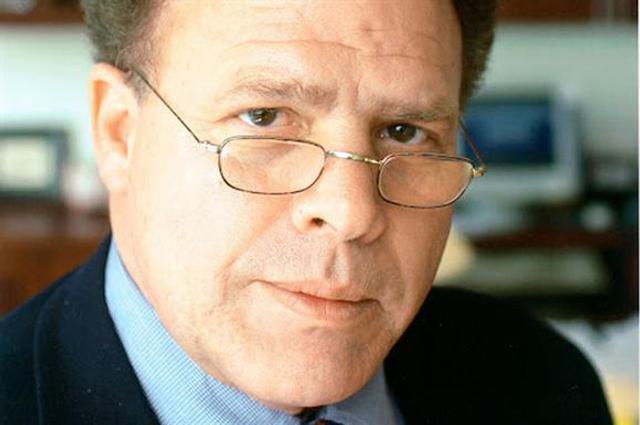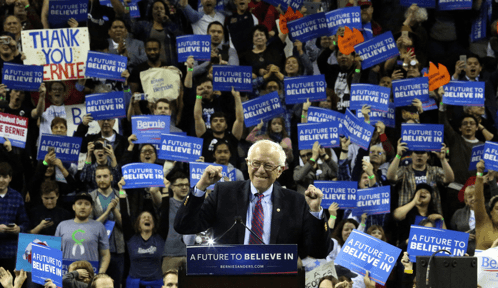The wisdom of Roger Craver part two
- Written by
- Joe Burnett
- Added
- May 04, 2017
‘If you want to be a campaigning fundraiser, now’s the time to be one – there’s no better time than when everything’s going wrong.’

Last week we brought you the first part of our interview with the legendary Roger Craver, lifelong civil rights activist and fundraiser. He discussed the rise of Trump and the inspirational way organisations like Planned Parenthood and the American Civil Liberties Union have responded to the new incumbent of the White House and his divisive policies. As he so memorably put it, the battle never ends: once you win a right, there’s always going to be some son of a b**** who wants to take it away!
This week we get the second half in which Roger gives his thoughts on technological advances, campaigning fundraising and offers some much-needed advice to the charities sector. His forthright take on what’s been happening in the UK is one heck of a wake-up call: ‘you’ve got your own Trumpism over there, except it’s not Trump, it’s sloth!’
Do you think it’s harder to affect change when you come from the left and are potentially challenging the status quo?
Change is always more difficult to achieve than maintaining the status quo. It’s in our DNA. We see that in fundraising. Most organisations do not understand that the greatest risk they’re running in today’s markets is to maintain the status quo. They think it’s the safest thing, but as events have proved in the UK, that’s just got them into a mess. Most organisations just stick their head in the sand and hope these things go away, but they won’t, as you can see with your fundraising regulator and data privacy. And things are going to get worse: most organisations are going to ignore the situation and then get pounded. Those that take the risk of change are going to be all right, and it’s the same in all sectors of society, not just fundraising. It’s always more difficult to affect change than it is to maintain what’s always been done.
Fortunately, there’s a sort of inverse law that takes effect whereby once conditions or fears become intolerable, people do take to the streets, people do give money and that energy is flowing on the progressive side in the States because people feel there is no alternative to fighting the status quo. That provides the energy and the money to make the next step.

Do you think technology has played and will continue to play a crucial role in this process?
I do. Technology has played a pretty big part in creating the problem, as I mentioned regarding automation, and technology has played an historic and unprecedented part in raising the communications level for change, whether it’s the Arab Spring, the Trump and anti-Trump phenomena, or the Brexit and anti-Brexit phenomena. Technology, in the form of social media, has played an important part.
The key to if it’s lasting is whether or not that technology is integrated into what humans ultimately need, which is human contact.
There’s only so much organisations can do digitally. People have to take action and that’s invariably at the local level. You don’t move a government by sending petitions and you don’t change the world by the number of likes on a Facebook page. That’s vapid stuff. The key is understanding that these technologies are great for servicing people but you have to know what to do for these people once they’ve surfaced and held up their hand. That’s where a lot of learning has to take place because the generation of movement organisers and leaders from the sixties and seventies is by and large off the scene now. The big open question is whether the millennials will rise to the occasion. There’s some doubt from observers as to whether that’s the case. I happen to believe in them, but there are many who think of them as a lost generation, so the jury is out. But we can’t ignore them, we need to figure out how to work together to get changes made or stop other changes from happening. It’s by no means a done game.
How did the ACLU campaign start?
First of all, they were prepared in terms of having systems in place that didn’t get terribly overloaded and could accept contributions. Many of those were given voluntarily at the end of the electoral campaign. People were simply shocked that Trump had won and the question that they asked was ‘What can I do?’ The ACLU was very smart: they were out the next day with a picture of Donald Trump featuring a caption saying ‘See you in court’. It made clear in the newspapers, in a full-page ad in the New York Times, on its blogs and e-mails that they were ready to go to war against any anti-civil liberties actions that the administration would take. Of course, the ‘Muslim ban’ hit a couple of weeks later and when the TV and press covered the ACLU lawyers going into court and showing up at airports to protect immigrants who were under fire, the donations just skyrocketed. The ACLU raised 150,000 donations totalling $24 million and that wouldn’t have been possible a generation ago because the mechanisms for people contributing that way didn’t exist. The online collection basket is as important for an organisation like the ACLU as it is for disaster response charities if there’s an earthquake or something. This was the political activist equivalent of a tsunami.
It wasn’t just the ACLU: Planned Parenthood had the same experience of tens of millions of dollars come in and they were out the day after the election with the message: ‘If you want to stay in bed or hide from the world, we can’t blame you. But I hope you won’t and will join me in saying these four words: ‘These doors stay open’. Planned Parenthood are fighting the Trump administration’s plans to defund them, of course.
Common Cause, which worked on Watergate and impeaching Nixon, was saying ‘We need your help to prepare’. Meanwhile, The Human Rights Campaign, which protects LGBTQ rights sent a message saying ‘We need you to be with us now, but also for the long haul because we’re in a marathon not a sprint’. So all these groups were very quickly out in the public forum with messages, and their websites are very well known, with newspapers covering them heavily.
They have to be aware, and I think they are, that history indicates they will lose a big part of these financial supporters pretty quickly. Retention for a normal charity is lousy: in the United States 75 per cent of new donors leave at the end of the first year. So 75 of 100 new ACLU or Planned Parenthood donors who made a contribution in the wake of Trump’s win will probably become inactive after the end of the first year. It doesn’t have to be that way and we’ll see what these organisations do to hold on to them. I think some of the things they’re doing, such as grassroots training will help hold these people there. But it’s a real question.

Is the money being raised for legal fees to fight legislation in the courts?
In the case of the ACLU, it’s almost always legal: defending individual rights through the courts under the protections guaranteed by the US constitution. You have a right to speak, to petition, to be free in your religion, etc – these are fundamental rights guaranteed by the constitution so the ACLU uses that, as it should, to go into court when an immigration official is pulling some shabby piece of action. The courts are pretty independent from the political process over here in the USA, for the most part, and we saw what happened to the Muslim ban: they struck it down within 24 hours.
It’s the same with Planned Parenthood. To protect a woman’s right to access an abortion in those numerous states where it’s threatened. They’re also keeping their clinics open as the conservatives try to defund them of the $400m a year they receive from the federal government for women’s health services outside abortion. And for tens of millions of American women, Planned Parenthood is the only healthcare they’ll receive and not just reproductive care. It’s a unique combination of healthcare and civil liberties.
There’s been a lot of praise for the user-friendly nature of ACLU’s webpage – do you think that such a simple interface facilitates not just the giving process but the coming together of people?
Having an easy-to-use and informative web presence is essential for all organisations. We’re pretty naïve in the nonprofit world if we think that people are very forgiving when it comes to whether e-commerce transactions are clumsym clunky, or not user-friendly. We’re judged by what I call the ‘Amazon standard’. If it’s not as easy as Amazon to use – and almost no charity website is – then you have a disappointed or frustrated donor and it cuts down on funds and retention. The number of abandoned online shopping carts in the charity sector is higher than in the commercial sector and that’s because the technology is by and large out-of-date and hasn’t been invested in.
Do you think the internet facilitates or hinders transparency?
It should make it a lot easier. I think most nonprofits don’t take advantage of that, even though it’s pretty easy to give short video reports of what’s happening on the ground, or to have interviews with beneficiaries and staff members on the ground, or send out quick e-mails updates. It simplifies the process of communications and that’s the ultimate part of transparency: the ability for people to see why you need their money and whether that money made a difference. The internet is perfectly structured to do that, something that most organisations are too lazy to take advantage of.

Is this peer-to-peer matching pledges process used by the ACLU a common strategy for organisations of its type?
Yes, matching gifts is a 45- or 50-year-old technique in the United States, one that’s used by a lot of organisations and, if used properly, can be very effective. Unfortunately, like so much in fundraising, people copy successful ideas without realising what’s successful about them, or what the principles are behind them.
Do you think there are lessons in responsiveness to a crisis that could be learned from the current climate in the US? For example, the UK fundraising sector has yet to respond uniformly to its own crisis of nearly two years ago.
I grew up in the flower business in the late forties and early fifties. My father was a retail florist and the biggest problem in that business was providing flowers for funerals. This was in the days before credit cards, so one of the great risks for a florist was non-payment of bills. I saw my father’s secretary putting out invoices for flowers for a funeral that was happening that day. I said that it seemed a bit harsh given the guy had only been buried earlier that day. My dad said ‘You gotta get ’em while the grief is hot, because if you wait a week it goes down 20 per cent and if you wait two weeks it goes down another 20 per cent’.
I did a piece on The Agitator called ‘Get’em while the grief is hot’ talking about how that applies to fundraising. You have to be out there the instant something occurs or it drops off markedly. So if you’re trying to raise money for something that happened two years ago that was a crisis or a disaster it won’t work.
Equally, once you are out there, you then have to deal with these incoming donors: you have to get them on board, you have to cultivate them, you have to thank them, stay on top of them and bring them into the fold, even though the vast majority will not stay with you because enough will, to take advantage of that spike in donors that you’ve received. There are special speed and stewardship requirements for what I call ‘flash philanthropy’. It’s a different dynamic. Being there when the event occurs is so important.
I’m almost speechless at how badly the sector [in the UK] has handled both the media attacks and the internal attacks from donors in the last two years. I find it hard to imagine that any competent human being would behave the way the charities sector behaved. I’ve been watching this current regulator, the ICO. In the United States, we’d be in that office burning ir down if they tried that! And yet everyone just bemoans the fact without doing anything about it.
It’s not a very honourable period for the nonprofit sector and, thank goodness, some people are trying to do something about it with the Commission on the Donor Experience. More and more people have to want to change the industry and it seems to me it’s a sector in the UK that doesn’t like change. There’s an active minority of organisations that are trying and doing amazing work, and a number of great people, but you’ve got your own Trumpism over there, except it’s not Trump, it’s sloth!
Is this a good time to be a campaigning fundraiser in the USA?
Absolutely! There’s never been a better time. If you’re a fireman, there’s no better time than when the forest is burning. If you want to be a campaigning fundraiser, now’s the time to be one, because these types of phenomena come in cycles only every 25 years or so. I think we’re right now at the start of a cycle when campaigning is going to be so important and doing it well and consistently will produce huge dividends for the organisations that do it.
That’s a great line to end on, thank you Roger! It’s clearly a fantastic time to be alive.
It’s always a fantastic time to be alive, Joe – it beats the alternative!
‘I’m still doing it after 55 years – the battle keeps going’: the first part of our interview with Roger is available to read here.

















